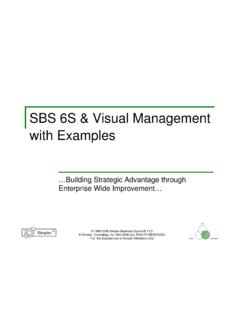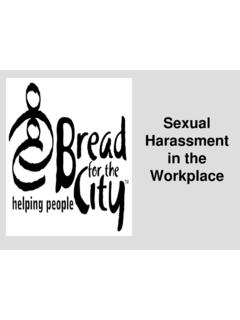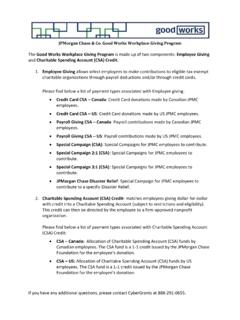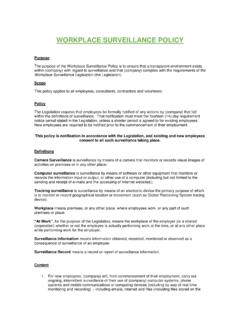Transcription of Appropriate Workplace Behaviour - WEHI
1 Appropriate Workplace Behaviour Date approved: 20/07/2021 Version: 2 Effective date: 20/07/2021 Policy author: Learning and Organisational Development Manager Review date: 2024 Status: Approved Approval authority: Chief People Officer Policy Number: PL37 Division/Professional Service: People and Culture Page 1 of 17 Purpose This policy: specifies WEHI s expectations for Appropriate Behaviour in the Workplace ; defines what constitutes discrimination, harassment and bullying under the law; outlines the process for making a complaint about inappropriate Behaviour ; defines the framework for managing inappropriate Behaviour , including disciplinary action and termination of employment.
2 Scope This policy applies to employees, students and consumer buddy program volunteers at the Walter and Eliza Hall Institute for Medical Research (WEHI). A reference to an employee in this policy should be read as meaning a reference to a WEHI employee, students or volunteer. Research Misconduct: This policy does not cover professional research misconduct. Allegations of research misconduct will be managed using WEHI s policy for Good Scientific Practice. Managing Unsatisfactory Work Performance: This policy and procedure does not cover unsatisfactory work performance. This will be managed using WEHI s policy for Managing Unsatisfactory Work Performance.
3 Policy 1. Expectations WEHI expects the highest standard of Behaviour and conduct in the Workplace and does not tolerate discrimination, harassment and bullying in the Workplace . Employees must: uphold WEHI s values; behave in a reasonable and professional manner; treat others with dignity, courtesy and respect; listen and respond appropriately to the views and concerns of others; respect the opinions and beliefs of others; be fair and honest in the dealings with others; and comply with all WEHI policies and procedures. Appropriate Workplace Behaviour Policy Appropriate Workplace Behaviour Policy Page 2 of 17 Where an employee fails to meet these expectations and engages in inappropriate Behaviour , Appropriate action will be taken.
4 This may involve mediation, coaching, counselling and/or disciplinary action. Examples of inappropriate Behaviour include (but are not limited to): not complying with WEHI policies and procedures; disruptive or negative Behaviour that impacts on colleagues; discriminating against, harassing or bullying another employee(s) or any other person; and/or improper use of WEHI equipment and resources. This policy and procedure applies to behaviours that occur: in connection with work, even if it occurs outside normal working hours; during work activities; at work related events, for example, at conferences and work related social functions; and/or on social media, where employees interact with colleagues and their actions may affect them either directly or indirectly.
5 2. Workplace discrimination Discrimination is treating, or proposing to treat, someone unfavourably because of a personal characteristic protected by the law, such as sex, age, race or disability. Protected personal characteristics under discrimination law include: age; carer and parental status; disability (including physical, sensory and intellectual disability, work related injury, medical conditions, and mental, psychological and learning disabilities); employment activity; gender identity, lawful sexual activity and sexual orientation; industrial activity; marital status; physical features; political belief or activity; pregnancy and breastfeeding; race (including colour, nationality, ethnicity and ethnic origin); religious belief or activity; sex.
6 Expunged homosexual conviction; and personal association with someone who has, or is assumed to have, one of these personal characteristics. It is also against the law to treat someone unfavourably because it is assumed they have a personal characteristic or may have it at some time in the future. Appropriate Workplace Behaviour Policy Appropriate Workplace Behaviour Policy Page 3 of 17 Discrimination can occur directly or indirectly. Direct discrimination is when a person or group is treated less favourably than another person or group in a similar situation because of a personal characteristic protected by law, an employee is refused promotion because they are too old.
7 Indirect discrimination is when an unreasonable requirement, condition or practice is imposed that has, or is likely to have, the effect of disadvantaging people with a personal characteristic protected by law. For example, it could be indirect sex discrimination if a policy says that supervisors must work full-time, as this might disadvantage women because they are more likely to work part-time because of family responsibilities. Or, it could be indirect disability discrimination if the only way to enter a public building is by a set of stairs because people with disabilities who use wheelchairs would be unable to enter the building.
8 3. Workplace harassment Harassment is any form of Behaviour that is uninvited, unwelcome and which humiliates, offends or intimidates another person, or makes the Workplace or training environment uncomfortable and unpleasant. It is important to understand that a one-off incident can constitute harassment. Harassment is unlawful if it: is based on particular protected attributes such as a person s sex, race, disability or age; or hurts another person (even if it was not intended to cause hurt - intent is irrelevant under the law). Australian law also has specific provisions relating to sexual harassment, racial hatred and disability harassment: the Sex Discrimination Act 1984 prohibits harassment in the Workplace by employers, co-workers and other Workplace participants , such as partners, commission agents and contract workers.
9 Sexual harassment is broadly defined as unwelcome sexual conduct that a reasonable person would anticipate would offend, humiliate or intimidate the person harassed; the Disability Discrimination Act 1992 prohibits harassment in the Workplace based on or linked to a person s disability or the disability of an associate; and the Racial Discrimination Act 1975 prohibits offensive Behaviour based on racial hatred. Racial hatred is defined as something done in public that offends, insults or humiliates a person or group of people because of their race, colour or national or ethnic origin. Harassment in the Workplace / can take many forms (verbal, written, visual or physical) and can be obvious, subtle, direct or indirect.
10 Examples of harassment include (but are not limited to): telling insulting jokes about particular racial groups; sending explicit or sexually suggestive emails or text messages; displaying offensive or pornographic posters or screen savers; making derogatory comments or taunts about a person s disability; asking intrusive questions about someone s personal life; making sexual or suggestive remarks, references and propositions; persistent and unwelcome requests to go out; spreading rumours; Appropriate Workplace Behaviour Policy Appropriate Workplace Behaviour Policy Page 4 of 17 mimicking or making fun of someone; name calling, threats or insults; circulating humiliating or intimidating literature; unwelcome practical jokes; following someone to and from work; offensive hand or body gestures, wolf whistling; and/or unnecessary physical contact (pinching, patting, touching, hugging against a person s will, kissing, pushing, shoving or jostling.)






